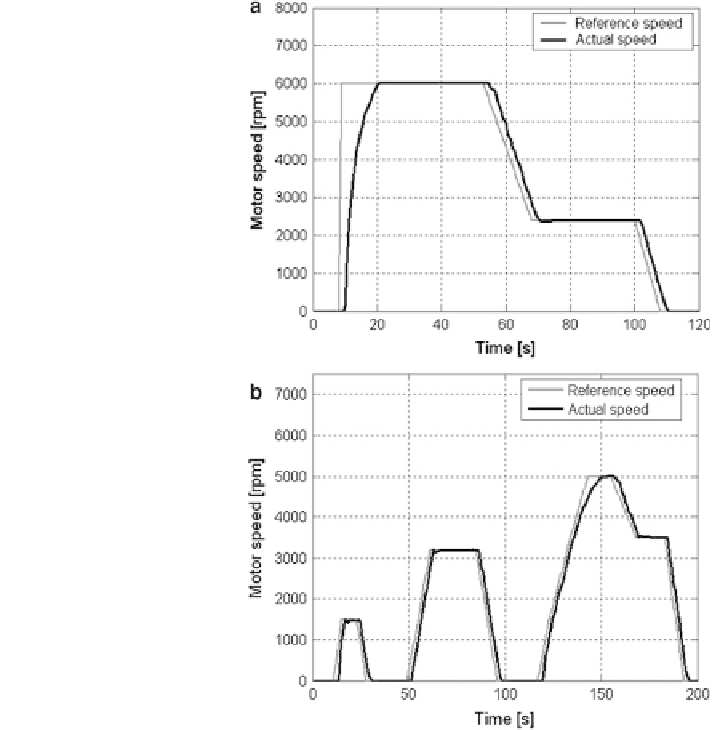Environmental Engineering Reference
In-Depth Information
Fig. 6.21 a European driv-
ing cycle R47. Motor speed
versus time. b European
driving cycle R40. Motor
speed versus time
The experiments are described without taking into account the start-up issues,
already analyzed in
Sect. 6.4
.
Since the power train operates in soft hybrid configuration (with a power limit
only for the R47 cycle), the stack power is imposed by the engine requirements,
and only the stack temperature can be regulated. However, as all water manage-
ment interventions produce their effects on times longer than typical dynamics of
driving cycles (an order of magnitude of 100 s with respect to 1 s) and are cor-
related to slow stack temperature dynamics, an optimal temperature profile cannot
be imposed on the basis of instantaneous power requirements, but the choice of
operative temperature ranges is necessary. This choice is taken considering the
mean stack power of the two cycles (400 W for R40, 760 W for R47), according to
results of Fig.
6.20
(about 310 K for R40, 320 K for R47). As a consequence, any
shifting from the reliable performance could be attributed only to working pecu-
liarities of dynamic phases.

